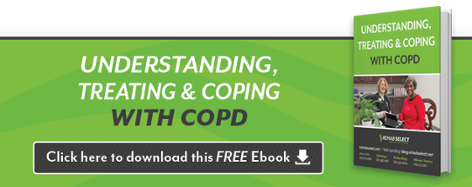 COPD (chronic obstructive pulmonary disorder) represents two conditions and their associated symptoms. Chronic bronchitis and emphysema are both symptoms that are present in and related to COPD. As a result, patients can suffer from oxidative stress, which makes it imperative that rehab professionals combine their care efforts with a dietitian to plan meals that reduce breathlessness or shortness of breath.
COPD (chronic obstructive pulmonary disorder) represents two conditions and their associated symptoms. Chronic bronchitis and emphysema are both symptoms that are present in and related to COPD. As a result, patients can suffer from oxidative stress, which makes it imperative that rehab professionals combine their care efforts with a dietitian to plan meals that reduce breathlessness or shortness of breath.
Overcoming Shortness of Breath: How Diet Can Help
Treating breathlessness from COPD can be more problematic with overweight patients. In these cases a COPD diet plan will include nutrients that promote healthy breathing, that fight infection, and that help the patient maintain a healthy weight. COPD patients must also eat enough calories to manufacture the energy needed to prevent any weakening of pulmonary muscles and the diaphragm.
Oxidative Stress
Calcium and vitamin D are essential additions to a COPD diet, but so are carbs, healthy fats and protein. Adhering to this menu not only affects how much energy is used, but also has an influence on the production of carbon dioxide, or the waste product that is emitted when a person exhales. If too much carbon dioxide accumulates, a COPD patient can begin to feel weak or sick.
Nutrient-Rich Calorie Requirements
COPD patients require nutrient-rich calories and must exert more energy when they breathe. Therefore, the muscles that are used for breathing generally need 10 times more calories than what is usually required. A healthy diet also fights the infections that often affect the COPD patient.
Keeping Track of Weight
Patients are advised to keep track of their weight about two times a week or every day if they are taking a diuretic. Any unexplained weight loss or gain should be reported to the doctor immediately.
Importance of Calcium and Vitamin D
While meal planning for COPD must meet the patient’s nutritional requirements, food must be consumed at specific times as well. Generally, meals eaten in the morning, when a patient’s energy level is the highest, are advised. Also, nutrients, such as calcium and vitamin D, can alleviate symptoms of COPD. Since most COPD patients usually develop osteoporosis in their later years, the use of these two nutrients should always be incorporated into the diet.
High-Fiber Foods
Foods high in fiber — fruits, vegetables, cooked legumes and whole grains in the form of bran, pasta, rice and cereal—are vital to a COPD meal plan. The COPD patient’s goal should be to eat at least 20 grams of fiber daily. For instance, fiber needs can be met by eating bran at breakfast, a sandwich made with whole grain bread for lunch and legumes for dinner.
Since fiber is the part of a plant food that cannot be digested, it assists in moving digested foods through the GI tract. In addition, fiber is helpful in controlling blood glucose and has proven to be effective in reducing cholesterol levels, too.
Foods to Avoid
Patients should avoid overeating, since doing so can also cause breathlessness. Therefore, foods that cause bloating should be avoided, such as extra spicy foods, fried foods, cabbage, Brussels sprouts, onions or peppers. Sodium should be limited, too. If too much salt is consumed, the COPD patient can find it harder to breathe. Therefore, instead of using salt, the patient is better off switching to spices or herbs and not adding salt during meal preparation. Also, it’s imperative to scrutinize food labels, making sure to exclude foods that contain more than 300 mg of salt or sodium per serving.
Other Important Recommendations
In addition to consuming healthy foods, COPD patients should follow these recommendations:
- Drink eight ounces of water every day, which aids in digestion and eases coughing that brings up mucus.
- Limit caffeine consumption, as this substance can interfere with other COPD medicines.
- Chew food more slowly and take smaller bites. It’s also helpful to drink liquids or beverages after a meal and to sit up while eating. The airways should be cleared about one hour before eating.
- Eat various foods from each of the five food groups, which will help COPD sufferers obtain their needed nutrients.
- Patients who need support when breathing should wear their cannula when they are eating a meal, since this can help prevent shortness of breath. Both eating and the digestive process need oxygen in order to produce extra energy.





